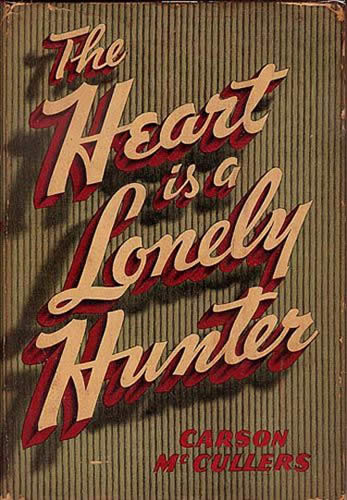

The atmosphere of the bigoted, segregated Jim Crow South is also a major focal point of the novel. The Southern mill town at the heart of the novel is suffering-a lack of available work leads to increased social tensions between the members of the community, while simmering resentments among the working class ignite racial tensions and inspire a political schism in which revolutionary voices are challenged or quashed by apathy and hopelessness.

Widely recognized as the greatest economic crisis in the history of industrialization, the Depression was a destabilizing event which impacted and displaced countless families and communities. At that time, the South was still in the throes of the Great Depression. The Heart is a Lonely Hunter is set in the late 1930s. Her work has been widely adapted for stage and screen, and her novels and short stories alike remain oft-cited examples of Southern Gothic literature. Her novels The Heart is a Lonely Hunter, The Member of the Wedding, and Reflections in a Golden Eye explore themes of alienation, radical politics, and the struggle to live a decent, empathetic life. In spite of a series of strokes that left her largely paralyzed by the age of 31, McCullers remained prolific throughout her career. Reeves McCullers committed suicide in Paris in 1953, after which McCullers retreated to upstate New York. McCullers had relationships with a number of women and often dressed in men’s clothing-and yet in 1945 she remarried Reeves McCullers, who himself had homosexual relationships throughout their marriage. McCullers then returned to New York, where she moved in trendy literary circles, became a member of the artists’ salon February House, and made connections that would allow her to move to Paris after the end of World War II. Her 1937 marriage to Reeves McCullers took her to Charlotte, North Carolina, where the couple lived for several years until their divorce in 1941.

McCullers began dividing her time between New York and Columbus, Ohio after another bout of rheumatic fever. At 17, McCullers moved to New York City to continue her piano studies at Juilliard-but after falling on hard times in the city, she spent her time working odd jobs and taking writing classes. At the encouragement of her watchmaker father, she began writing stories as well. McCullers, a dedicated piano student, practiced music several hours each day. Born in Georgia in 1917, Carson McCullers demonstrated artistic promise from an early age-even as her tomboyish style, introspective nature, and battles with several bouts of rheumatic fever alienated her from many of her peers.


 0 kommentar(er)
0 kommentar(er)
